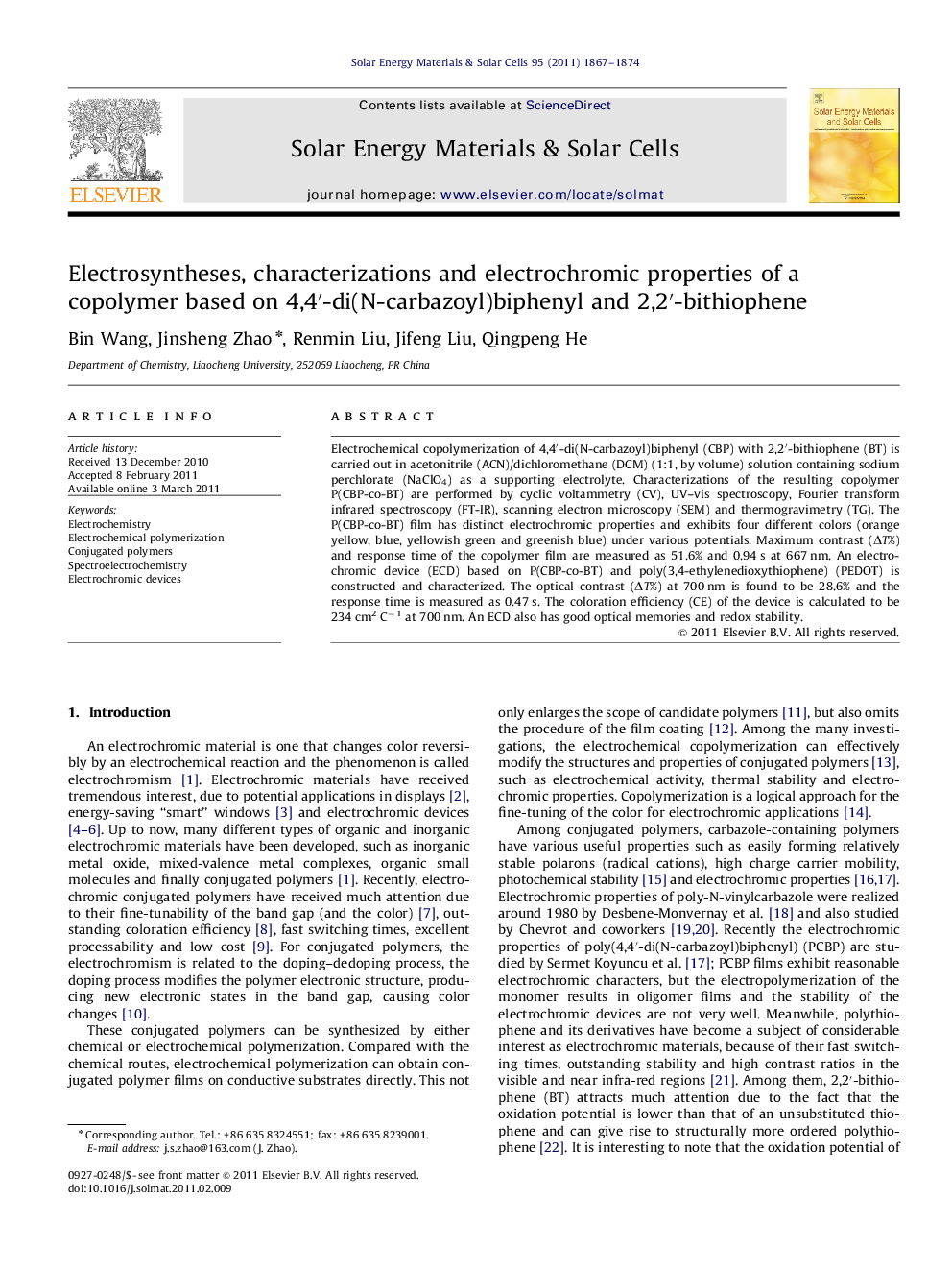| Article ID | Journal | Published Year | Pages | File Type |
|---|---|---|---|---|
| 78863 | Solar Energy Materials and Solar Cells | 2011 | 8 Pages |
Electrochemical copolymerization of 4,4′-di(N-carbazoyl)biphenyl (CBP) with 2,2′-bithiophene (BT) is carried out in acetonitrile (ACN)/dichloromethane (DCM) (1:1, by volume) solution containing sodium perchlorate (NaClO4) as a supporting electrolyte. Characterizations of the resulting copolymer P(CBP-co-BT) are performed by cyclic voltammetry (CV), UV–vis spectroscopy, Fourier transform infrared spectroscopy (FT-IR), scanning electron microscopy (SEM) and thermogravimetry (TG). The P(CBP-co-BT) film has distinct electrochromic properties and exhibits four different colors (orange yellow, blue, yellowish green and greenish blue) under various potentials. Maximum contrast (ΔT%) and response time of the copolymer film are measured as 51.6% and 0.94 s at 667 nm. An electrochromic device (ECD) based on P(CBP-co-BT) and poly(3,4-ethylenedioxythiophene) (PEDOT) is constructed and characterized. The optical contrast (ΔT%) at 700 nm is found to be 28.6% and the response time is measured as 0.47 s. The coloration efficiency (CE) of the device is calculated to be 234 cm2 C−1 at 700 nm. An ECD also has good optical memories and redox stability.
Graphical AbstractThis figure shows spectroelectrochemical spectra of the copolymer P(CBP-co-BT) with applied potentials between 0 V and +1.3 V.Figure optionsDownload full-size imageDownload as PowerPoint slideResearch highlights► An electrochromic copolymer based on 4,4′-di(N-carbazoyl)biphenyl and 2,2′-bithiophene was electrochemically synthesized. ► The resultant copolymer film displayed distinct color changes between four colors with good switching times and optical contrast. ► The dual type electrochromic device based on the copolymer and poly(3,4-ethylenedioxythiophene) displayed multichromism, quick switching time and good stability.
